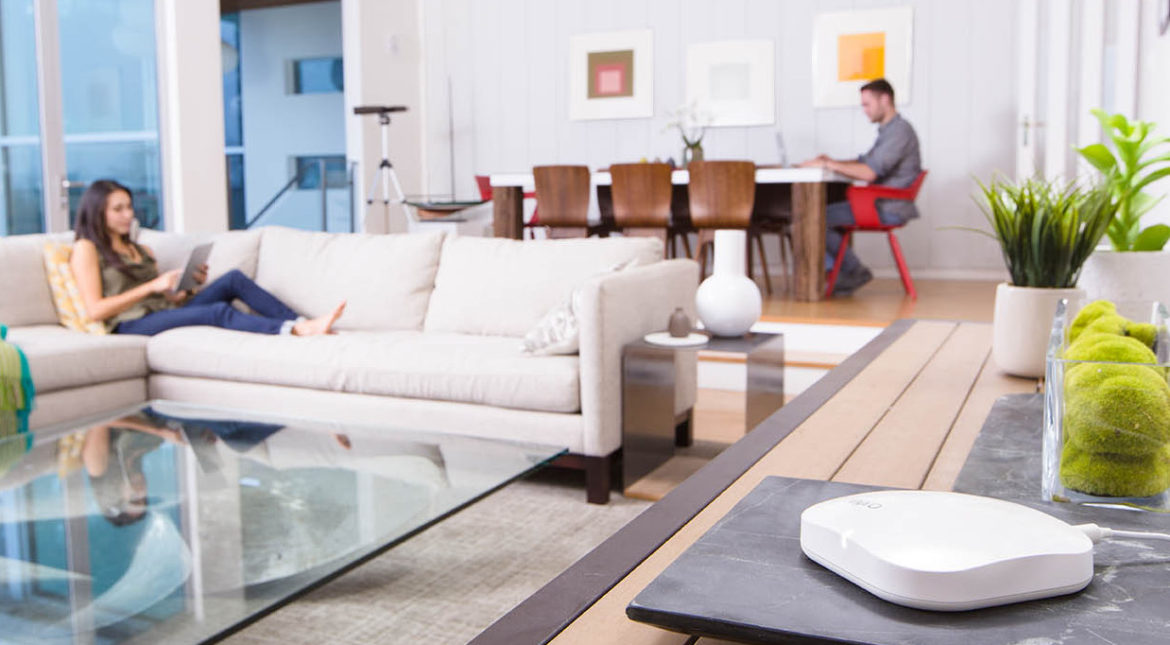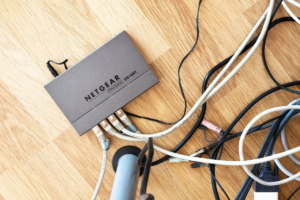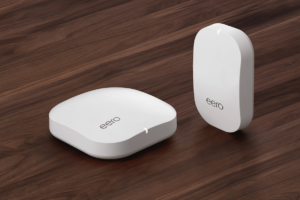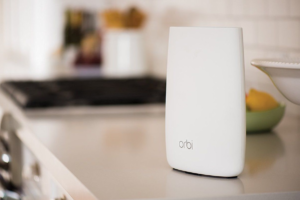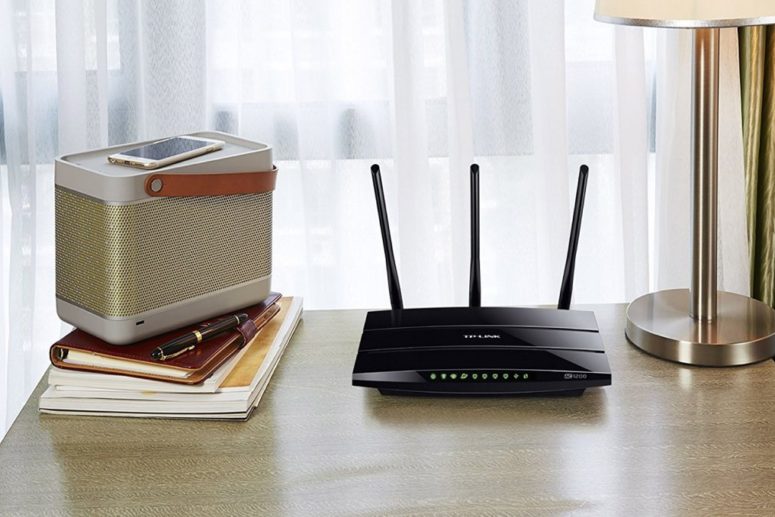You have the power to improve your WiFi performance just by where you place it. If your router is in the front of your house and your bedroom is in the back, you may be accustomed to seeing that spinning wheel of death while waiting for your Netflix to buffer. The severity depends on many things: your home’s construction, your router, your provider…lots of things.
Regardless of the other hurdles, where you put your router matters. An important thing to remember is that the signal from a router broadcasts in all directions from the antenna, so it’s useful to think of signal strength in terms of a radius of broadcast. If your router is next to a wall adjacent to your neighbor’s apartment, they’re getting that slice of your signal, not you (obvious pro-tip: password protect your Wi-Fi right now).
Here are some other tips for optimal placement of your wireless router to get a stronger signal.
Keep it central
Location is key. Try to find the most central home for your router that you can—and don’t consider the placement of your desktop computer or home modem to be a limiting factor. It’s worth buying some Ethernet Cat 5 cable and run the wire to the most central location you can.
Consider even mounting the router on a wall or in a corner by the ceiling if you have two floors because radio waves generally spread out and towards the ground, not up. Think about putting your router on the second floor if you have one.
Avoid impenetrable obstructions
Radio waves certainly travel through walls, but the thicker the wall, the weaker the signal will be on the other side. And if your home is fortified with brick or concrete walls, the signal is going to be absorbed by the wall and lose significant strength when traveling through it. Same goes for water, like your big fish tank, which can cause a lot of resistance for your signal.
Metal and mirrors are also your enemy because those materials actually reflect radio waves, so putting the router behind a TV or in a bathroom is ill advised.
JAMES COMEY Technology has forever changed the world we live in. We’re online, in one way or another, all day long. Our phones and computers have become reflections of our personalities, our interests, and our identities. They hold much that is important to us.
Avoid the kitchen
When it comes to battling any potential buffering of your Wi-Fi signal, the microwave is not your friend. Microwaves and Wi-Fi routers operate using the same 2.4 gHz slice of the electromagnetic spectrum. When you use the microwave, it’s literally interfering with your Wi-Fi signal. Additionally, metal objects will absorb a signal, and with a metal fridge, stove, and other kitchen appliances, it’s probably best to just keep the router out of the kitchen.
The same frequency is also used for cordless phones—so don’t keep your cordless phone base station near the router either.
Set It Up High
WiFi routers emit radio waves, which spread out and down from their source. Mounting the router to a wall or setting it on a high shelf can give you a better signal, especially if you live in a two-story house and want a good connection on both floors.
Position the Antenna
In a multi-story home, positioning a router’s antenna sideways can help you get a better signal upstairs. Pointing an antenna up helps the router reach farther laterally.
If your router has two antennas, though, take care of all possibilities by pointing one antenna up and the other to the side. And if you’ve got a router without any antennas, make sure you stand it the way it’s made to go. That is, don’t lay a vertical router on its side.
Avoid A Lot of People
Water inhibits WiFi signals. Since humans are mostly water, a bunch of us hanging out in a room together can interfere with the signal. You may have noticed getting worse Internet connections in crowded spaces. And yes, you probably want a good WiFi signal in the room where people like to gather, but all those bodies might slow it down in other parts of the house.
BONUS: Use Cole’s app, which lets you visualize the WiFi connection in your own house
If you’re so inclined, Cole created an app for Android phones that lets you upload a floorplan to see how electromagnetic waves propagate throughout your own home. (Some math required. Sorry.)

